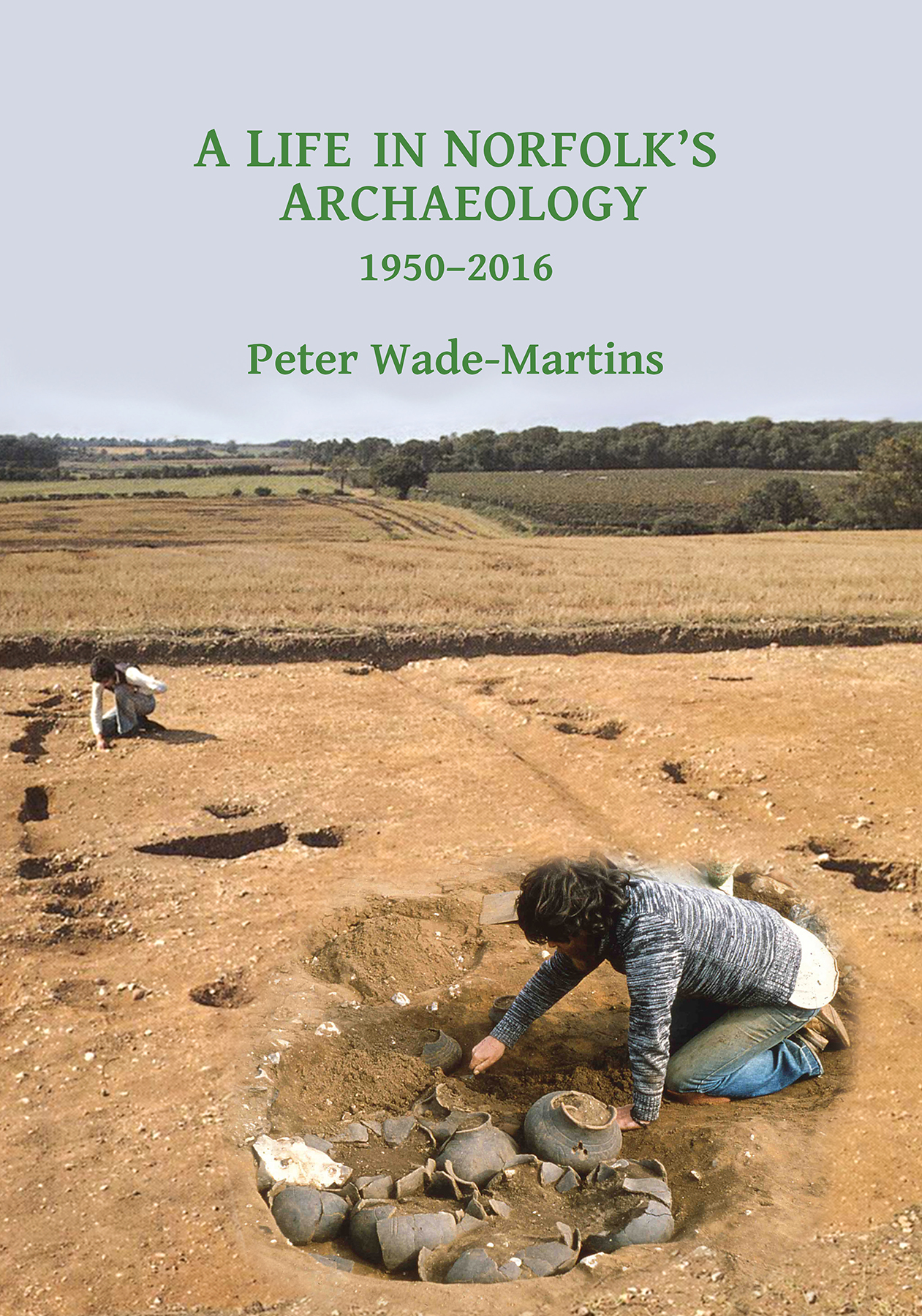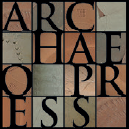
Publishing Scholarly Archaeology since 1997

Download Sample PDF
H 210 x W 145 mm
404 pages
Illustrated throughout in colour and black & white (87 plates in colour)
Published Nov 2017
ISBN
Hardback: 9781784916572
Digital: 9781784916589
Keywords
Norfolk; Archaeology; Arable; landscape archaeology; Medieval; Anglo-Saxon; Biography; History of archaeology; excavations; British archaeology; commerical archaeology
A Life in Norfolk's Archaeology: 1950-2016
Archaeology in an arable landscape
Hardback
£24.99
Includes PDF
PDF eBook
(personal use)
£16.00
PDF eBook
(institutional use)
Download
A personal history of Peter Wade-Martins archaeological endeavour in Norfolk set within a national context. It covers the writer’s early experiences as a volunteer, the rise of field archaeology as a profession and efforts to conserve archaeological heritage.
Contents
Norfolk Firsts ;
Time line of key events most of which feature in the Book ;
Chapter 1: Introduction ;
Chapter 2: The Early Years ;
Chapter 3: Excavating Deserted Medieval Villages ;
Chapter 4: The Launditch Hundred Project, 1967-71 ;
Chapter 5: North Elmham Park: The Excavation of a High-Status Anglo-Saxon and Early Medieval Settlement, 1967-72 ;
Chapter 6: Chance Finds ;
Chapter 7: Societies ;
Chapter 8: Amateurs in Action ;
Chapter 9: Metal Detecting: ‘The Norfolk System’ ;
Chapter 10: Urban Surveys ;
Chapter 11: The ‘RESCUE’ Movement, The Scole Committee and Professional County Units ;
Chapter 12: A New County Service for Field Archaeology, 1973-1999 ;
Chapter 13: Key Norfolk Archaeological Unit Projects ;
Chapter 14: The Story of ‘East Anglian Archaeology’ ;
Chapter 15: County-based Conservation Projects ;
Chapter 16: National Conservation Initiatives ;
Chapter 17: Some Rescue Excavations, 1972-92 ;
Chapter 18: Clearing the Publication Backlog from the Past, 1977-97 ;
Chapter 19: Re-structuring Field Archaeology in Norfolk, 1991 ;
Chapter 20: Time to Move On ;
Chapter 21: The Norfolk Archaeological Trust: a property-owning conservation trust ;
Chapter 22: Caistor St Edmund Roman Town ;
Chapter 23: Burgh Castle ‘Saxon Shore’ Roman Fort ;
Chapter 24: Two Monasteries ;
Chapter 25: Other Recent Acquisitions ;
Chapter 26: The Future Role of the Norfolk Archaeological Trust ;
Chapter 27: A Time to Reflect ;
Appendix 1: Alan Davison’s publications ;
Appendix 2: Summary of progress set out in the 1996 Five-year Development Plan for Archaeology in the Norfolk Museums Service ;
Appendix 3: List of those archaeologists who attended the February 1970 Barford meeting which represented the start of the RESCUE movement ;
Bibliography ;
Index
About the Author
Peter Wade-Martins obtained a PhD studying the evidence for the history of rural settlement in Norfolk from the Anglo- Saxon period through the Middle Ages up to the enclosures. This involved what was then a new technique of collecting sherds of pottery off ploughed fields and from that evidence working out where people lived in a parish at different periods from the seventh to the nineteenth centuries. He also excavated two deserted villages revealing evidence for the first time about village life in Norfolk in the Middle Ages. He followed this by excavating a high-status Anglo- Saxon settlement at North Elmham, where it was possible to work out the plans of Anglo-Saxon timber buildings from patterns left by their post-holes in the subsoil.Then, as County Field Archaeologist for Norfolk from 1973 to 1999, he organised and ran a county service for field archaeology developing a Sites and Monuments Record, an aerial photography programme, which made many startling discoveries, and a series of rescue excavations on a wide range of sites from prehistoric to medieval. His passion for countryside conservation led him to organise a number of ground-breaking conservation projects often trying to move a lot faster than English Heritage seemed willing to go.
Having retired early as County Field Archaeologist in 1999, he became the first Director of the Norfolk Archaeological Trust where he was instrumental in raising funds to buy an Iron Age fort, most of the Roman town at Caistor near Norwich, the remarkably well preserved Roman fort at Burgh Castle, a medieval castle and a complete monastery. All of them have been opened to the public. His one regret was that he didn’t have the opportunity to buy a deserted medieval village for the Archaeological Trust as well.
His other countryside interests include writing books on the decline and revival of the Manx mountain sheep, The Manx Loghtan Story (1990), the decline and eventual extinction of the old Norfolk Horn sheep, Black Faces (1993) and, with others, a two-volume work on Britishmade toy farm vehicles Farming in Miniature (2013 and 2014). His particular interest here has been to see how farm machinery familiar to each generation of farmers has been represented by contemporary toy makers. Other interests have included the creation of a photo archive of some 3,000 pictures of crofting life on the Isle of Eigg in the Inner Hebrides where his family have been regular visitors. He has also kept a flock of sheep since 1978.
Reviews
'What a life in Norfolk's archaeology! The book is destined to become an essential archaeological reference and to join other classics of archaeological autobiography, among them Sir Mortimer Wheeler's Still Digging and Philip Rahtz's Living Archaeology. An absolute must-read.' - Edward Biddulph (2018): Current Archaeology
Nominated for the Current Archaeology Book of the Year Award 2019

 Add to wishlist
Add to wishlist
